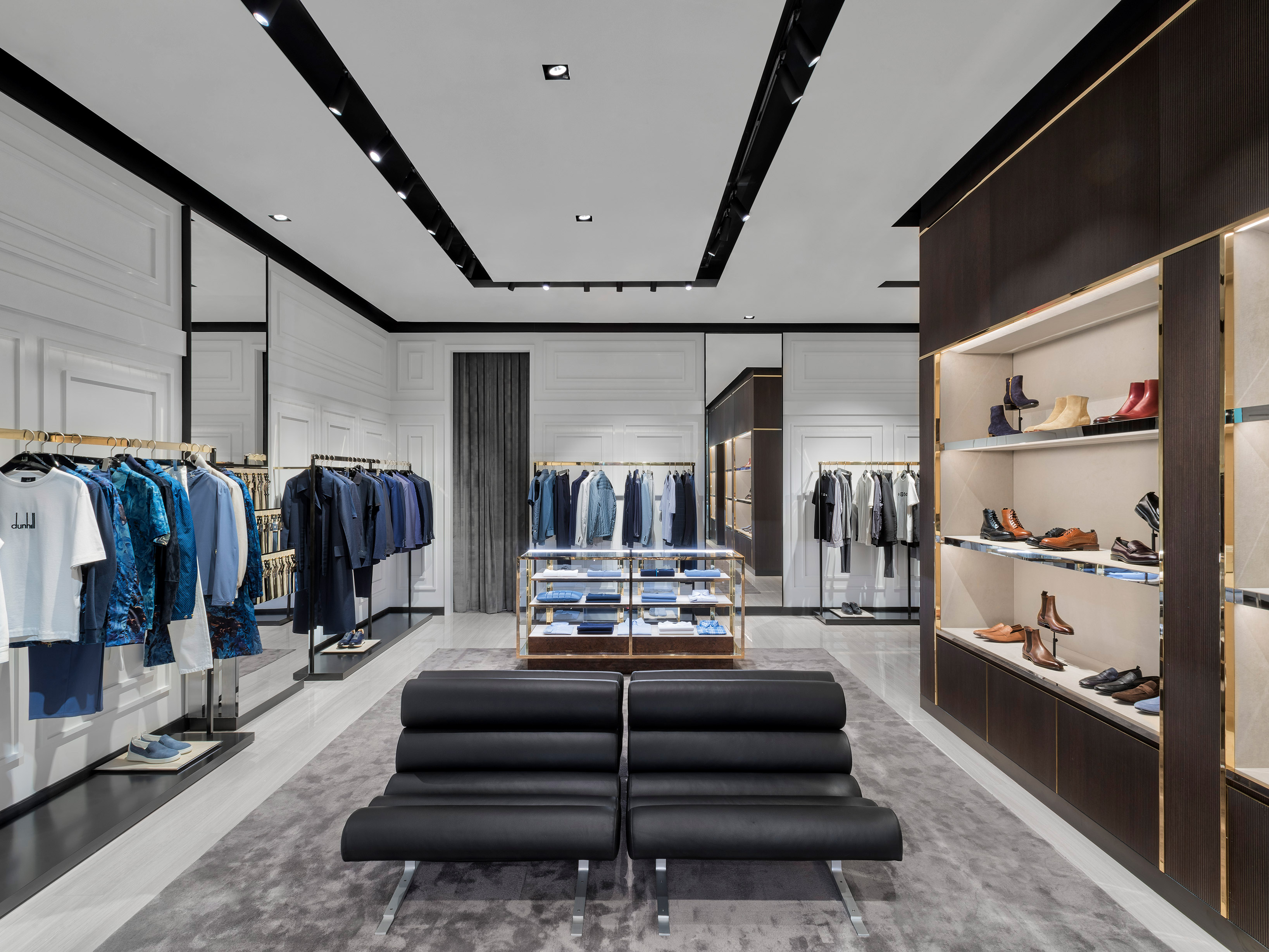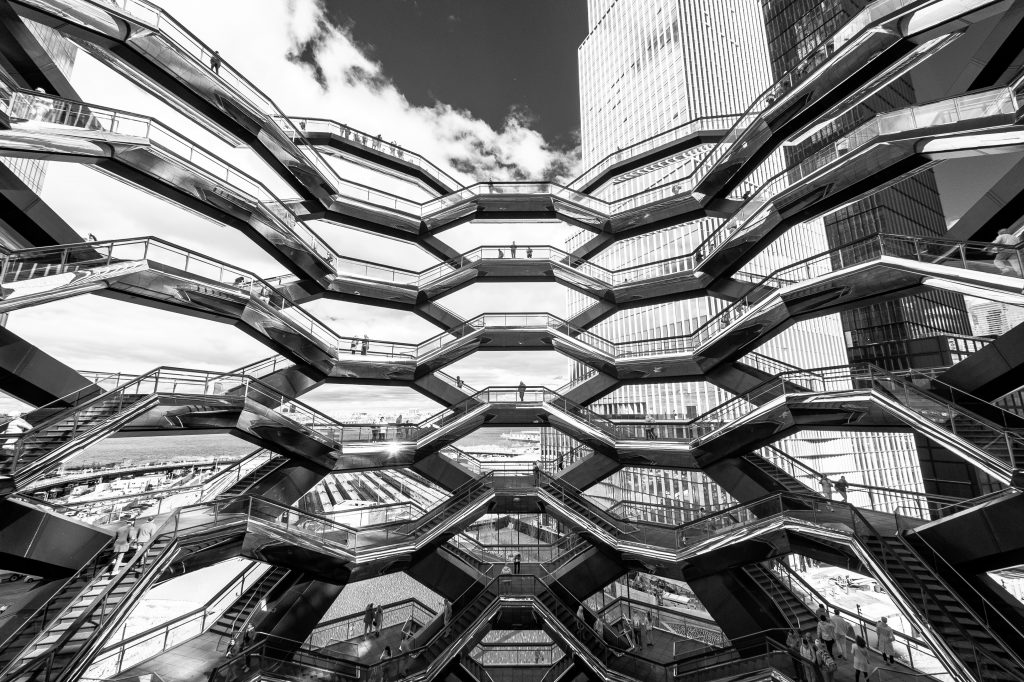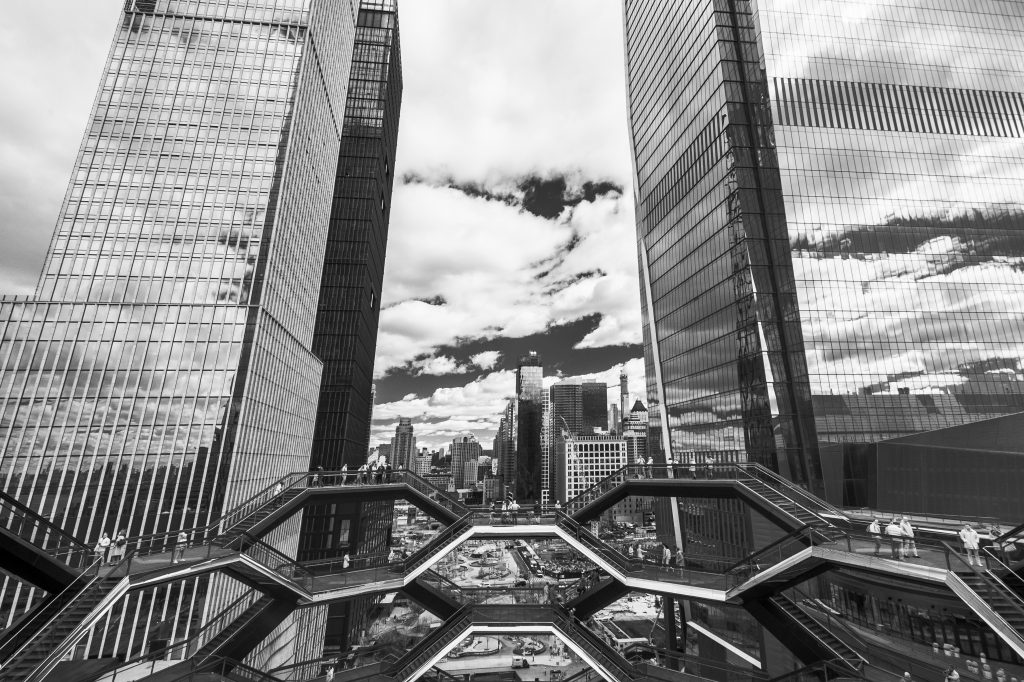Notes: On Hudson Yards
Our takeaways from exploring the micro-city, its monuments and restaurants

A city within the city of New York, the Hudson Yards district comprises 28 acres of residential, commercial and public space developed on top of and around the MTA’s former John D. Caemmerer West Side Storage Yard—once an untrodden abyss along the river. Almost all the statistics convey the staggering scope of this endeavor, beginning with the overall vision for 30 million-square-feet of new development. With the latest phase unveiled—Thomas Heatherwick‘s Vessel and The Shops & Restaurants at 20 Hudson Yards—more people have had an opportunity to visit and join the conversation.
Our experience mirrors the complexity of the site itself. From the architecture to the dining options, our thoughts stretch from excitement to concern over isolation. And while we think parts are worth a visit, it’s undeniable that this is predominantly a destination by the wealthy for the wealthy—more apt for luxury centers sprung up in Dallas, Dubai or Hong Kong than our home New York City.

Hudson Yards has changed the Manhattan skyline from so many vantage points. Many architectural critics have weighed upon its merits and shortcomings—which we will not do. But we can say that from its heart, a five-acre public garden, one feels enveloped in a cohesive neighborhood. This sensation is supported by the fact that Hudson Yards has its own end-of-the-line subway stop. At times, though, walking around feels like being elsewhere—outside of the city—but with attributes like the Edge, the highest outdoor observation deck in the Western Hemisphere, yet to come (in early 2020), there’s reason to be excited.

As for the one-million-square-feet dedicated to shopping—which includes the first-ever Neiman Marcus in the city—it joins the ranks of other premium city-malls. Our fear—outside of shining stars like The Conservancy—is that the buys in the stores aren’t different from anywhere else in the city or online. There are meticulous examples of merchandising, seen at Origins, Dunhill, Cremieux and more. But their ecosystem requires the continued draw of Hudson Yards. And then, there’s Snark Park. Once again, the Snarkitecture team brightens the world it’s been provided. A highlight, this playground for adults (read as permanent exhibition space) currently features a forest of columns containing dreams.

Another standout, Thomas Keller’s TAK Room brings mid-century elegance to Hudson Yards. In fact, stepping beyond the doors feels transportive. Up a winding staircase, guests enter a 200-seat bar and restaurant. Cocktails and champagne are served alongside delectable continental cuisine. In sampling their menu, we can attest that this is one food-lovers should add to their list. Erstwhile, Wild Ink, Hudson Yards Grill and Estiatorio Milos feature menus—and views—many will appreciate.

As for which destination will touch the most, the 35,000-square-foot food hall Mercado Little Spain aims to do for Spanish food what Eataly did for Italian. Not one, but three acclaimed Spanish chefs helped bring it to life: José Andrés and Ferran and Albert Adrià. It’s opening in waves, but when fully operational, it will be a market and all-day dining hub of the utmost quality. It may very well bring many into 10 Hudson Yards.

There are no passive feelings toward the Vessel. Heatherwick Studio’s divisive mascot for Hudson Yards is NYC’s newest monument—and it’s an uncommon, active one built to epic proportions. 2,500 steps comprise 154 flights of stairs between 80 landings. For those not intrigued by its design, it is—at a bare minimum—a good outdoor activity. It’s also a rare urban jungle gym, rising above parts of its own neighborhood to offer an eagle-eye view of the city. Of course, its symmetries and vistas will draw Instagrammers to the development, but just because people want to photograph it does not remove the greater substance. It’s a climb—and a beautiful one at that. It’s also a formidable entry into Heatherwick’s roster.

We continue to reserve our greatest excitement for The Shed, which is set to open on 5 April. First, it’s worthy of Hudson Yards’ highest architectural praise. Lead architectural firm Diller Scofidio + Renfro, with Rockwell Group, delivers a multi-purpose art institution. This dynamic structure features a large, retractable shell which will roll out over the building’s plaza to form The McCourt—a 17,000-square-foot indoor/outdoor amphitheater. Inside, there are also two exhibition levels and a 500-seat theater. The Shed embodies a new type of arts entity in NYC. It’s led by an independent non-profit cultural organization of the same name. And from headliner Björk to immersive commissions, the programming will contribute to the city as a whole.

It’s that component of The Shed that Hudson Yards may lack elsewhere. With this arts organization, the entire cultural climate of the city strengthens. Many of the other destinations aim to draw guests in—either to fortify a micro-city of luxury shops and amenities solely for the occupants of the sky-high homes or to snag the attention of tourists. Further, while most New Yorkers speak of their lack of space, Hudson Yards emphasizes every bit of footage they’ve got. That said, this is the largest mixed-use private real estate venture in American history and it has yielded much to explore. You should see for yourself.












